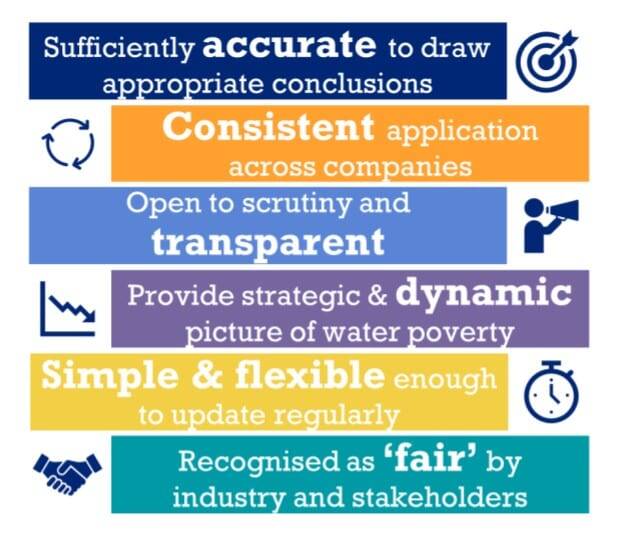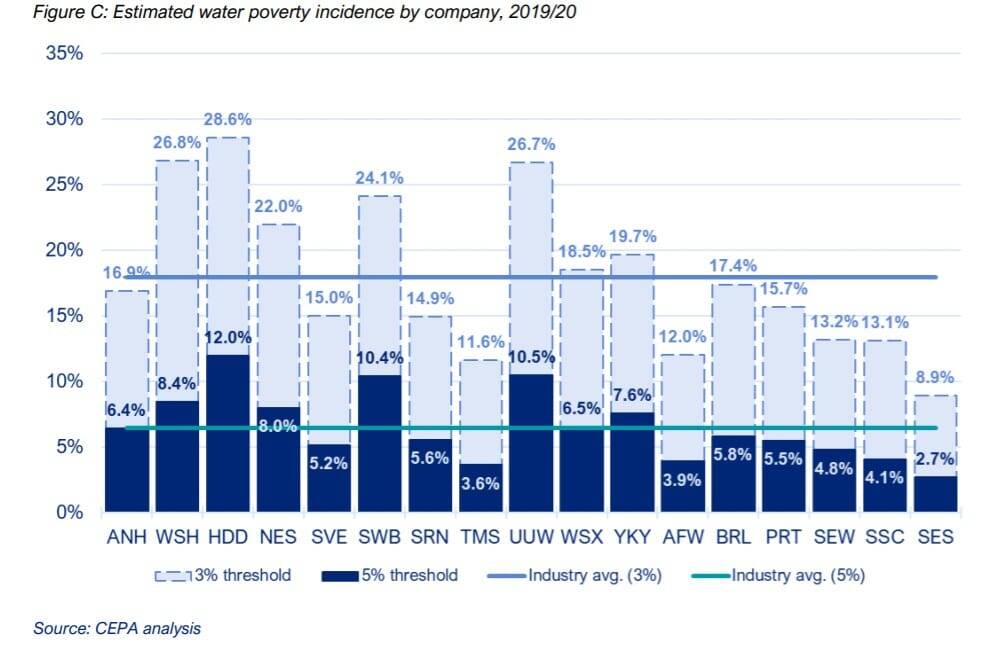You’ve reached your limit!
To continue enjoying Utility Week Innovate, brought to you in association with Utility Week Live or gain unlimited Utility Week site access choose the option that applies to you below:
Register to access Utility Week Innovate
- Get the latest insight on frontline business challenges
- Receive specialist sector newsletters to keep you informed
- Access our Utility Week Innovate content for free
- Join us in bringing collaborative innovation to life at Utility Week Live
The cost to plug the “water poverty gap” could be up to £720 million, according to a report commissioned by Water UK.
The report by Cepa showed the number of people living in water poverty in England and Wales is greater than previously calculated as of 2019/20, with more than 4 million households struggling to pay their bills.
The report said around 11.5 per cent of households across England and Wales fall between the three and five per cent bill to income ratio thresholds used to define water poverty.
Water UK commissioned Cepa to undertake the study as part of the ambition to eradicate poverty.

In 2019 the industry made a Public Interest Commitment (PIC) to “make bills affordable as a minimum for all households with water and sewerage bills more than five per cent of their disposable income by 2030 and develop a strategy to end water poverty.” Quantifying the amount of people who struggle to pay is a step towards the PIC goal.
This study compared water poverty rates at bill to income ratios of three per cent and five per cent of households’ income. It found nearly three times as many homes were defined as poor at the three per cent threshold than at the five per cent.
There has not previously been a common definition of water poverty or a metric to measure the numbers of households in different regions that would qualify.
The breakdown between billpayers in England and Wales showed 27 per cent of customers struggled to pay in Wales compared to 17 per cent in England at the lower three per cent threshold. At the higher threshold, nine per cent of consumers in Wales and six per cent in England faced difficulty paying bills. This variation between thresholds suggests a significant number of homes that would be most sensitive to changes in charges.

Regionally, Cepa found Hafren Dyfrdwy had the most billpayers struggling to pay in both the three and five per cent thresholds, followed by United Utilities and Welsh Water. The regions with fewer homes struggling to pay were SES, Thames and Affinity. Cepa said there were considerable variations across the country including large differences within and between supply areas.
Cepa estimated the “water poverty gap” as the theoretical minimum amount of money required to eliminate water poverty at the two thresholds. It found a gap of £236 million across the industry at the 5 per cent threshold and £720 million at the three per cent threshold.
The analysis took account of current interventions such as tariffs and support mechanisms, which vary between companies, partly influenced by the willingness to pay of other customers. It found that in many cases the support available still left billpayers within the three or five per cent poverty threshold. It suggested the reduction in water poverty rate from interventions by companies was one per cent for the three per cent threshold and 1.2 per cent less at the five per cent threshold.
This is the first time an attempt to measure industry-wide water poverty has been undertaken and builds on work undertaken by Cepa last year to find a suitable metric for measuring levels of water poverty regionally and nationally. The overall purpose of the project was to provide estimates and a methodological basis for updating them over time.




Please login or Register to leave a comment.